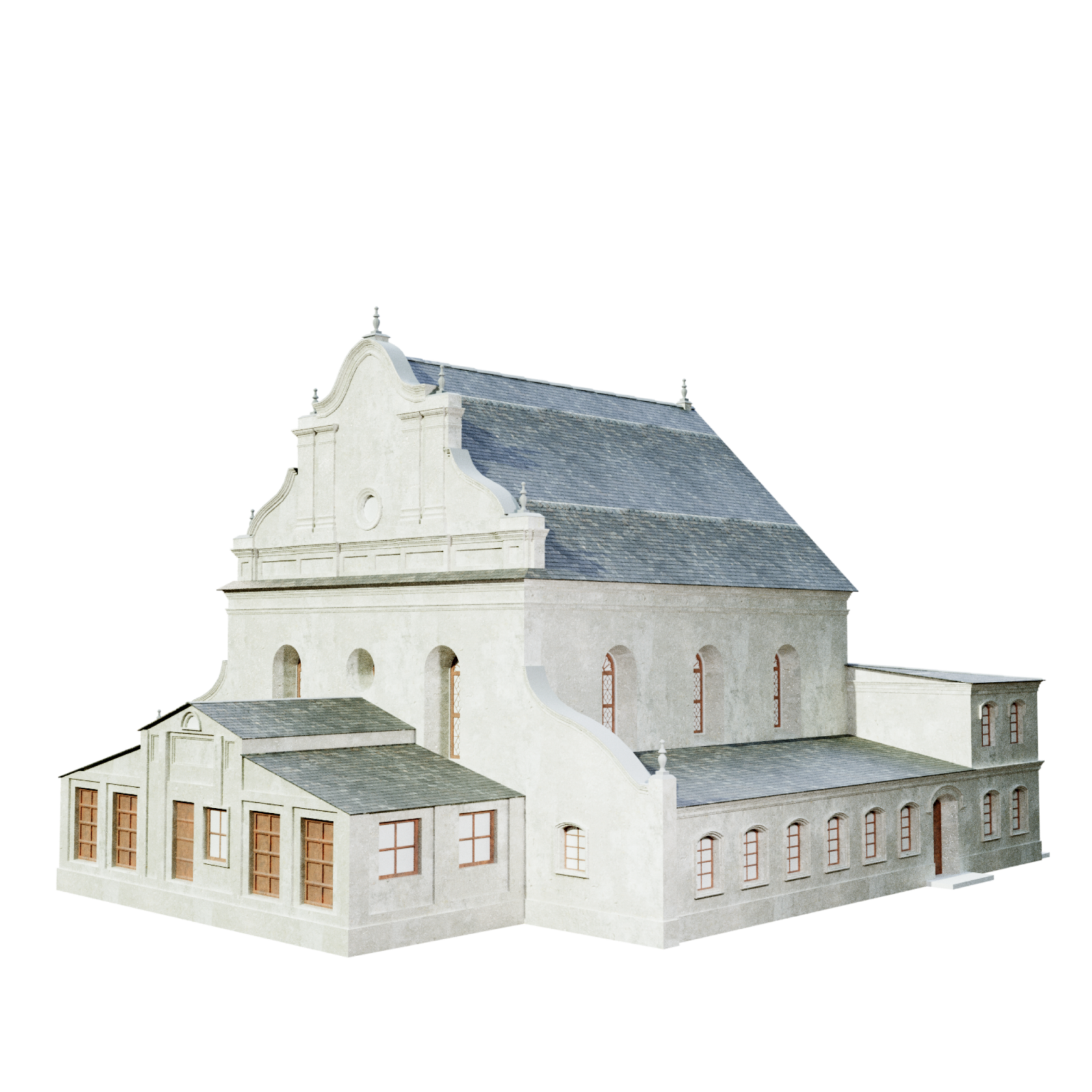VR-RECONSTRUCTION OF THE SLONIM GREAT SYNAGOGUE
Multimedia exhibition Belarus Shtetl
More about the project
More about the project

[ about ]
For centuries, Belarus was home to a network of Jewish shtetls - small towns where Jews were often the majority of the population. These towns were vibrant centers of economic, spiritual, and communal life. The inhabitants mostly spoke Yiddish, yet shtetls were also important places of interaction with non-Jews. This is a unique historical and cultural phenomenon, exemplifying the coexistence of different ethnic groups, religions, and languages.
Synagogues were an essential part of every shtetl, being not only places of worship but also communal centers for assembly and education. The Great Synagogue of Slonim is one of the oldest existing synagogues in Belarus and one of the most significant sites of Jewish heritage in the world in need of restoration.
BELARUS SHTETL

The Slonim Great Synagogue, constructed in 1642, stands as a testament to the once vibrant Jewish community in the region, embodying the rich local cultural and aesthetic traditions. Built in a baroque style, the synagogue features a dramatic gabled roof and an imposing exterior adorned with an impressive array of paintings and carvings.
The Great Synagogue survived the Holocaust but lost its original functions. In the post-war years, this historically significant edifice transitioned from a warehouse to a retail space and a furniture store. Fortunately, most of its original features, including the frescoes in the upper register of the walls, have persevered. In recent years, the synagogue has remained empty, gradually succumbing to disrepair, with the main hall still standing, albeit the paintings rapidly fading.
The Great Synagogue survived the Holocaust but lost its original functions. In the post-war years, this historically significant edifice transitioned from a warehouse to a retail space and a furniture store. Fortunately, most of its original features, including the frescoes in the upper register of the walls, have persevered. In recent years, the synagogue has remained empty, gradually succumbing to disrepair, with the main hall still standing, albeit the paintings rapidly fading.
Slonim synagogue, 2020. Grigoriy Kheifets
[ exhibition object ]
VR-TOUR AND RECONSTRUCTION
The virtual reconstruction of the Slonim Synagogue became the first object of the Belarus Shtetl project, gathering efforts of historians, restorers, artists, 3D designers, and IT engineers. Combining archival data and manual drawing with advanced modeling, the team dedicated almost a year to reconstruct the building in detail and create a 15-minute virtual tour showcasing the synagogue's heyday from the 17th to 19th centuries.
Using a VR headset, you can choose between a guided tour and free movement, immersing in the past. "Visiting" the synagogue during its prime reveals meticulously restored paintings and architecture, with the possibility of interaction using a "magnifying glass." The accompanying narrative unfolds Jewish traditions, the synagogue's history, and the story of the Slonim Jewish community and the shtetl. A specially crafted sound background includes archival audio recordings, transporting users to the synagogue's ambiance over a century ago. During the research, previously unknown 1930s photographs surfaced, enabling the reconstruction of lost fragments of paintings and furniture decoration.
Using a VR headset, you can choose between a guided tour and free movement, immersing in the past. "Visiting" the synagogue during its prime reveals meticulously restored paintings and architecture, with the possibility of interaction using a "magnifying glass." The accompanying narrative unfolds Jewish traditions, the synagogue's history, and the story of the Slonim Jewish community and the shtetl. A specially crafted sound background includes archival audio recordings, transporting users to the synagogue's ambiance over a century ago. During the research, previously unknown 1930s photographs surfaced, enabling the reconstruction of lost fragments of paintings and furniture decoration.
The session concludes with the option to transition to "real" time, offering a poignant comparison between the virtually restored synagogue and its current, neglected state.
Large-scale virtual reconstruction work can be used for the physical restoration of the Slonim Synagogue.
Large-scale virtual reconstruction work can be used for the physical restoration of the Slonim Synagogue.
[ Minsk ]
EXHIBITION
The multimedia exhibition of the virtually reconstructed Slonim synagogue was presented in Spring, 2021, in the cultural center Corpus, Minsk.

Poster design: Oleg Kutchinsky
Exhibition design: cultural center CORPUS
Sound production: Radio Plato
PR-campaign: IPR Belarus
Photo: Alexander Vasiukovich
Exhibition design: cultural center CORPUS
Sound production: Radio Plato
PR-campaign: IPR Belarus
Photo: Alexander Vasiukovich
[ to watch ]
VIDEO
Music in the video:
Sveta Ben "U sherym zmroku",
Pavel Ambiont "Svapna"
Sveta Ben "U sherym zmroku",
Pavel Ambiont "Svapna"
Belarusian-Jewish Cultural Heritage Center
Supported by Goethe-Institute in Belarus
Supported by German Federal Foreign Office as part of the Eastern Partnership program
Supported by Goethe-Institute in Belarus
Supported by German Federal Foreign Office as part of the Eastern Partnership program
ORGANIZERS AND PARTNERS
Project curator: Grigoriy Kheifets
Interior restoration: creative workshop Bastalia, Belarus
Technical development: Exposit company
Sound Design: Pavel Kirpikau
Interior restoration: creative workshop Bastalia, Belarus
Technical development: Exposit company
Sound Design: Pavel Kirpikau
PROJECT TEAM
